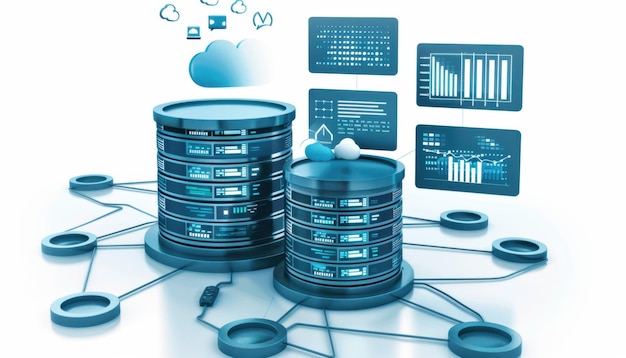If you are a student, you must have used a computer, and you probably know that it’s important to keep your data safe. This is especially true in something called a database. A database is sort of a huge electronic filing cabinet, where lots of data is stored: names, addresses, grades. Just as you lock your doors to keep your house safe, it’s important to keep databases secure to protect all the information inside.
Why Students Should Care About Database Security
One of the prominent necessities of students in Australia is database security. It prevents unauthorized access or manipulation of sensitive personal information. A majority of the students in Australian schools have stored their academic records, contact details, and other personal data in the school databases. It is important to save this data in order to preserve privacy and trust within educational institutions. Ensuring the security of the given information keeps it safe from:
• Identity Theft
• Data Breaches
• Fraud
• Privacy Violations
• Academic Integrity Issues
• Financial Loss
Steps To Enhance Database Security
Let’s discuss some simple security measures to ensure that your database is safe and secure. These simple measures anybody can take to enhance database security and let you start on how to protect your data.
Add Strong Password
First of all, provide strong passwords. Password acts like a key that opens the door. This means if you have an easily guessable, weak password, it will get easy for anybody to find it. Have a strong password with a mix of letters, numbers, and special characters. For example, do not use “123456”, try something like “Tr3e! Tig3r” instead. This way, it would be quite difficult for someone to guess or crack your password. Remember you will have to update your passwords from time to time so that they remain safe.
Access Controls
Always use access controls. Access controls are exactly like the locks on doors, and they greatly help in determining who can view or edit information within a database. You should only give access to those who need it. For example, if a person is accessing the database, only allow access to the team members who need it, not the whole class. That way, you make sure no one who shouldn’t be looking at or changing your information can.
Update Your Software
Third, update your software regularly. Software is what makes your computer run, and quite often, the manufacturers find flaws or “bugs” and therefore put updates online. Keeping updated with your software is a must since these updates often come with fixes for security problems. If a user does not update the software, it is as if he or she is leaving the door open to invite someone in.
Create Backups
Another important action is to back up your data. Backing up is the process of saving a copy of your important stuff in a safe place. When something goes wrong with your database, e.g. it was deleted or corrupted, then you’re now able to restore everything that was lost using the backup. Back up regularly, keep them in another location, and you are safe from any issues.
Use Encryption
Use encryption to secure your information. Encryption is like putting information into a secret code that only the right people can read. Even if someone gets hold of your data, they will not be able to understand it without the secret code. This is a powerful way to protect sensitive information, like personal information or financial data.
Monitor Regularly
It’s also important to see who is accessing the database. You should monitor who uses the database and what they do in it. This way, if something goes wrong or someone messes with your information, you know who did what.
Train People for Database Security
Another easy step is to train people in the use of a database securely. If everyone knows how to work best for database security, it’s easier to keep everything safe. For example, make sure everyone knows how to create strong passwords that are not shared and how to recognize suspicious activity. Good training prevents mistakes and gets everyone on the same page about keeping data secure.
Use Firewall
Lastly, consider using a firewall. This is just a security guard between your database and the world out. It helps keep the purveyors of intentions unwelcome to your business from getting into your database and helps stop unwarranted access. This is another aspect of database protection that stops attacks and keeps your data safe.
Conclusion
You can follow these steps to make good improvements to the database security. Remember to use strong passwords, access controls, updates in software, backing up of data, encryption of data, monitoring of access to databases, orientation of people to the best way they can maintain security, and firewalling. Each step is quite important in its own way and will help protect the database against threats.
Database security is a good skill to learn, and it helps you in your current and future activities. Be it working on your school projects or having a career in technology, securing databases is one essential part of information protection. By following best practices in security, the data will be handled safely and responsibly and guarded from people who might use it otherwise. So, take these tips, and you’ll be well on your way to becoming a database security expert.




